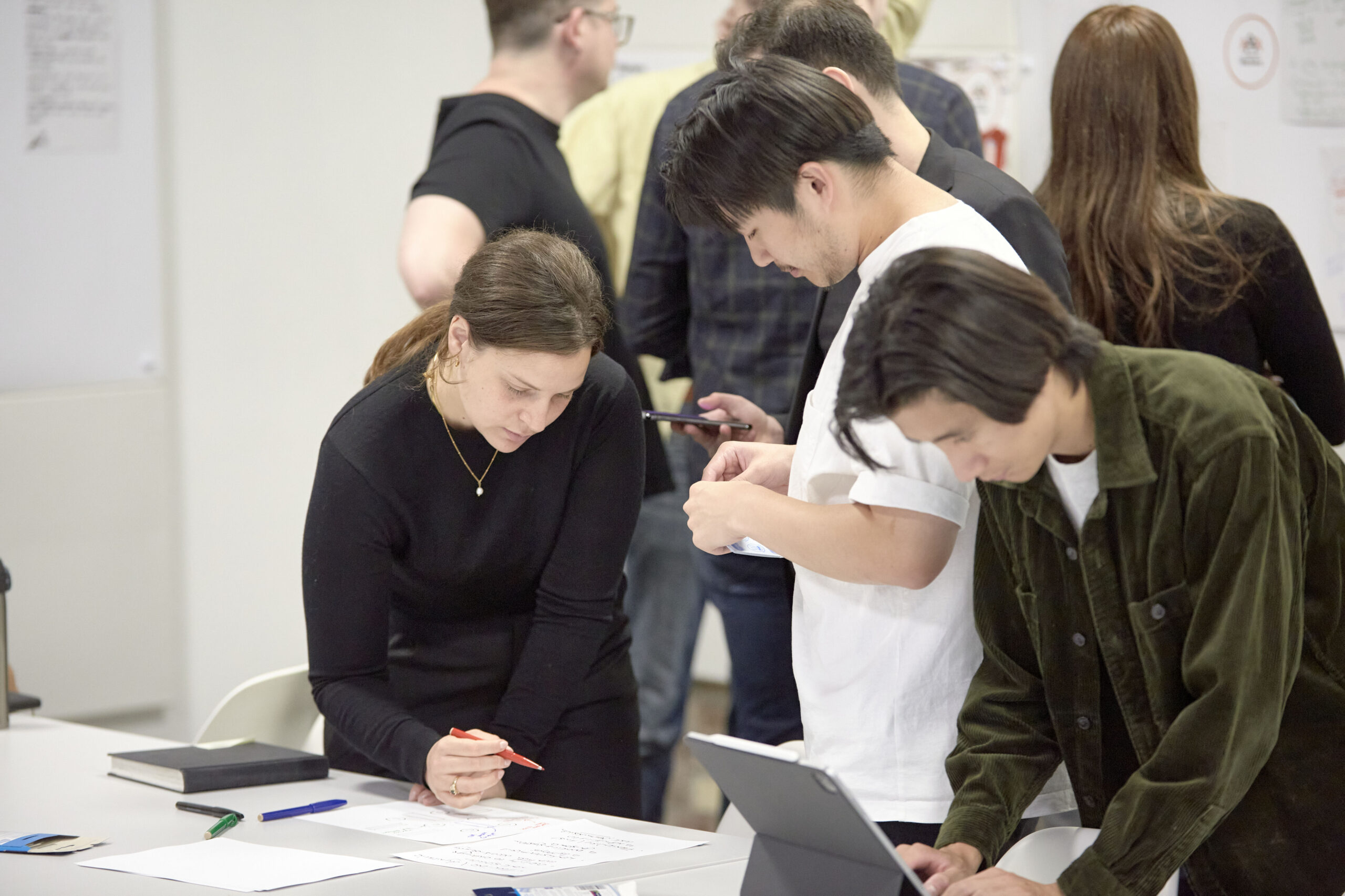

In both the exhibition and the catalogue, the drawings are lined up, so the images share vanishing points. This allows the fictional space of one drawing to invade that of another which brings diverse drawing from different centuries into often surprising dialogues with each other.
One particularly amazing drawing on display is Boullée’s ‘Unexecuted design for a metropolitan cathedral’ 1782. This is rendered with incredible accuracy and lightness of touch. The formality of the image with its one-point perspective, Sam suggests, extends out of the frame making the viewer stand centrally and perhaps a little straighter than the casual informality of Lutyens’s ‘Unexecuted design for the memorial to the missing’ which could be glanced at obliquely and drawn on headed note paper, one feels that the great man’s pipe and spectacles have only recently left the scene.


Despite the age of some of these drawings, this subject is highly relevant to current architectural practice. We are now moving to ‘complete’ knowledge of building through BIM and 3D CAD programs which fully integrate into the building’s specification, so everything is known about a building. It is, as Sam suggests ‘the exertion of the spread sheet into architecture’. The tool itself, like perspective, has an idea behind it which assumes a certain way of making architecture which precludes other approaches. The tools are not innocent bystanders, these programs are produced by vast multinational firms and now government projects are all done using BIM. The idea that a form of representation has a political and social content has never been more obvious. This exhibition tells us that ‘it was ever thus’ and we should recognise the power and limitations of the tools we use.
This post forms part of our series on The Architecture Drawing Prize: an open drawing competition curated by Make, WAF and Sir John Soane’s Museum to highlight the importance of drawing in architecture. The next round of the competition opens 10 July 2018.























































































































































































































































































